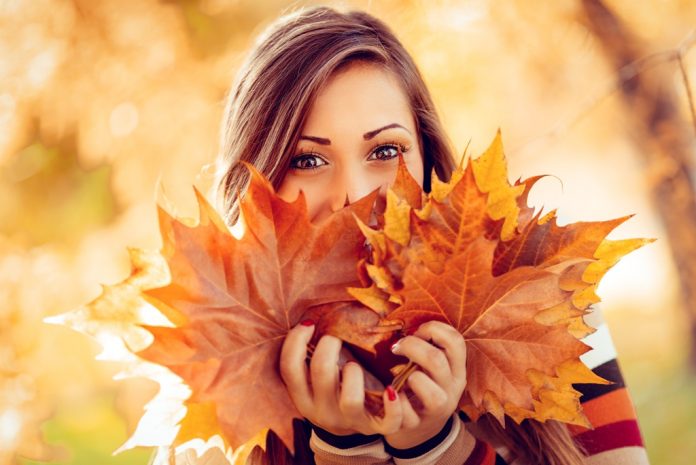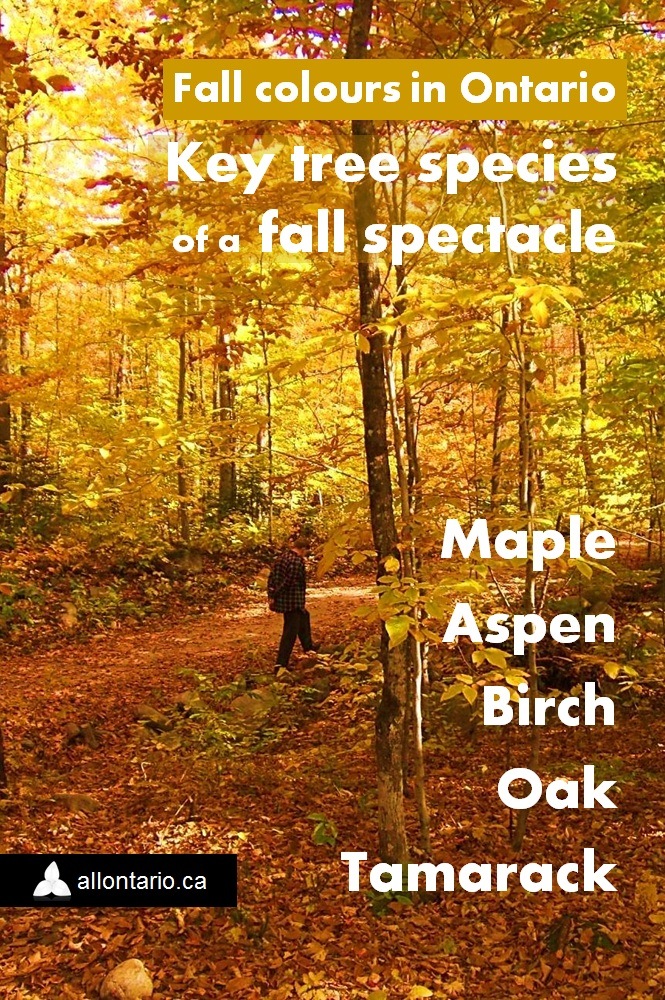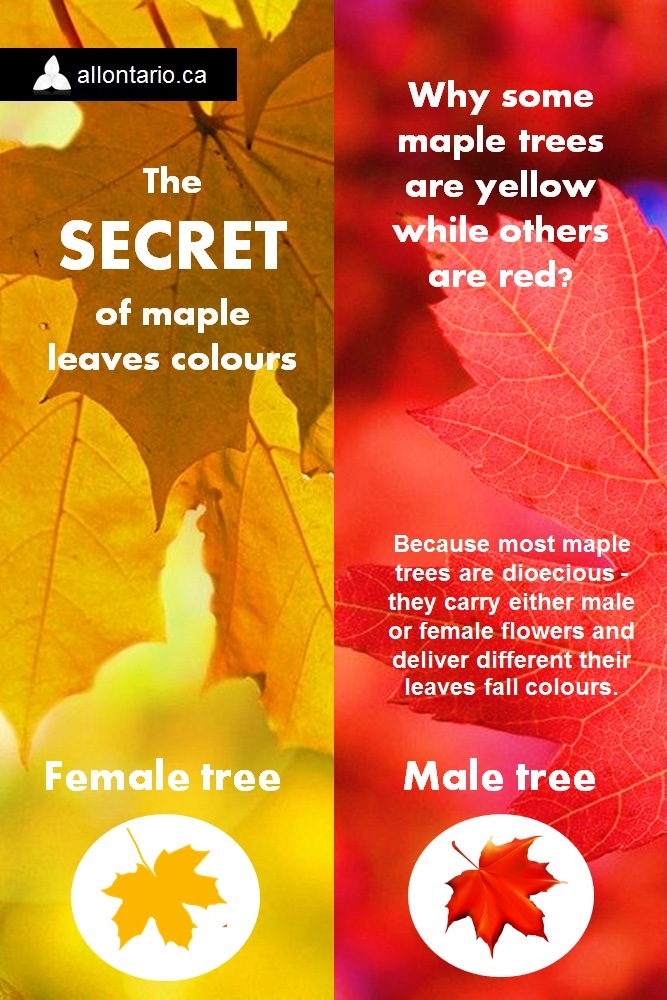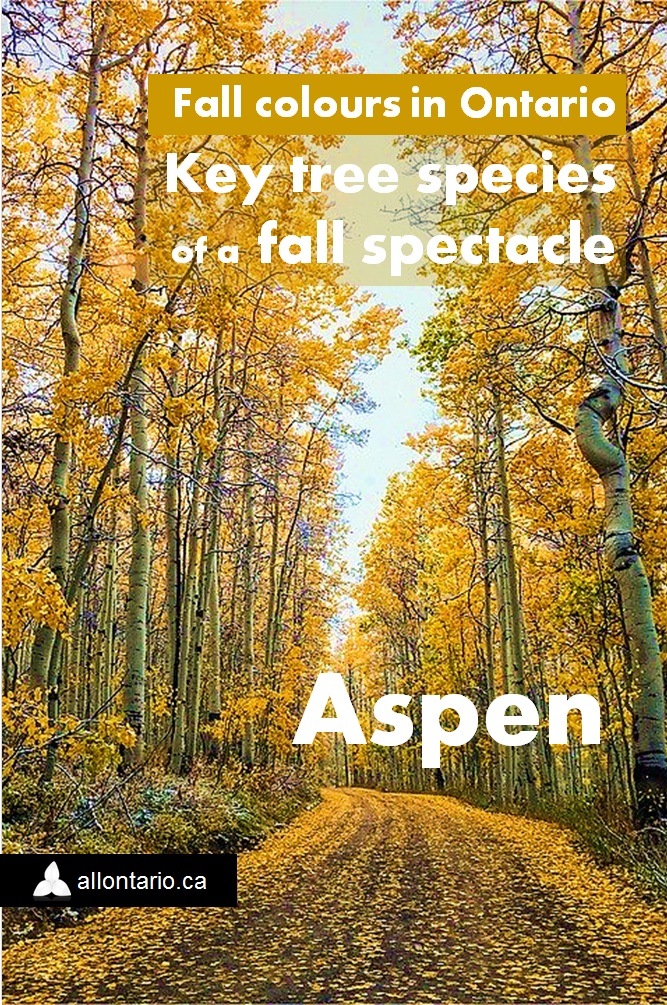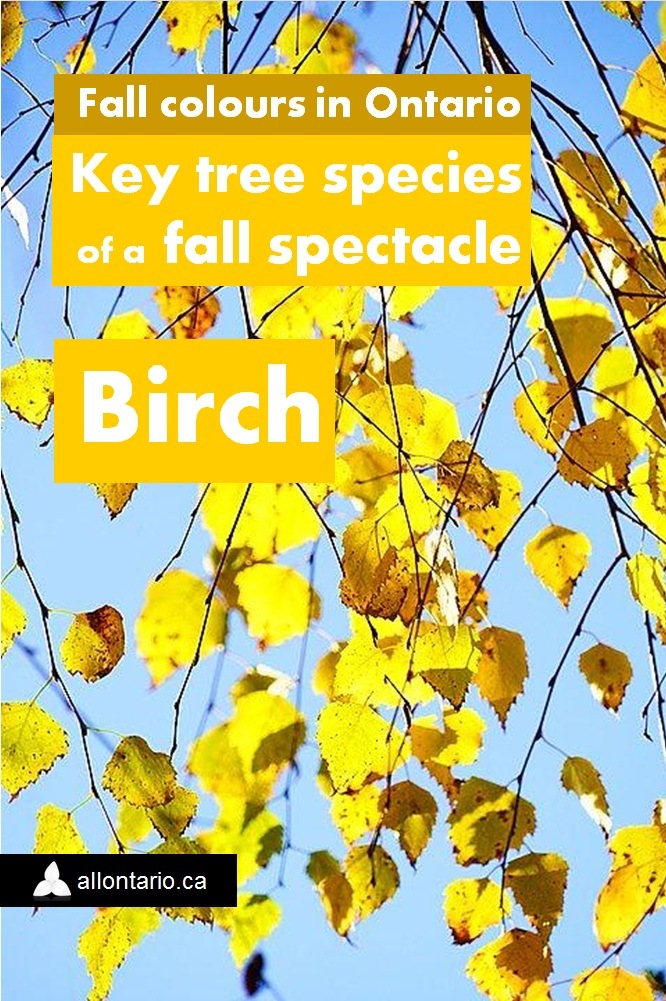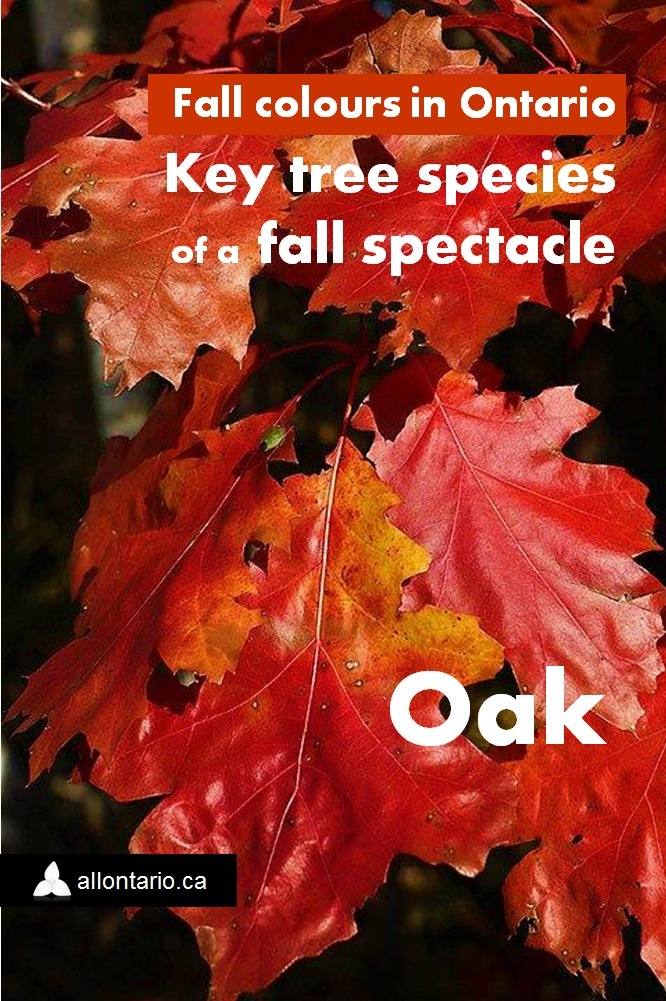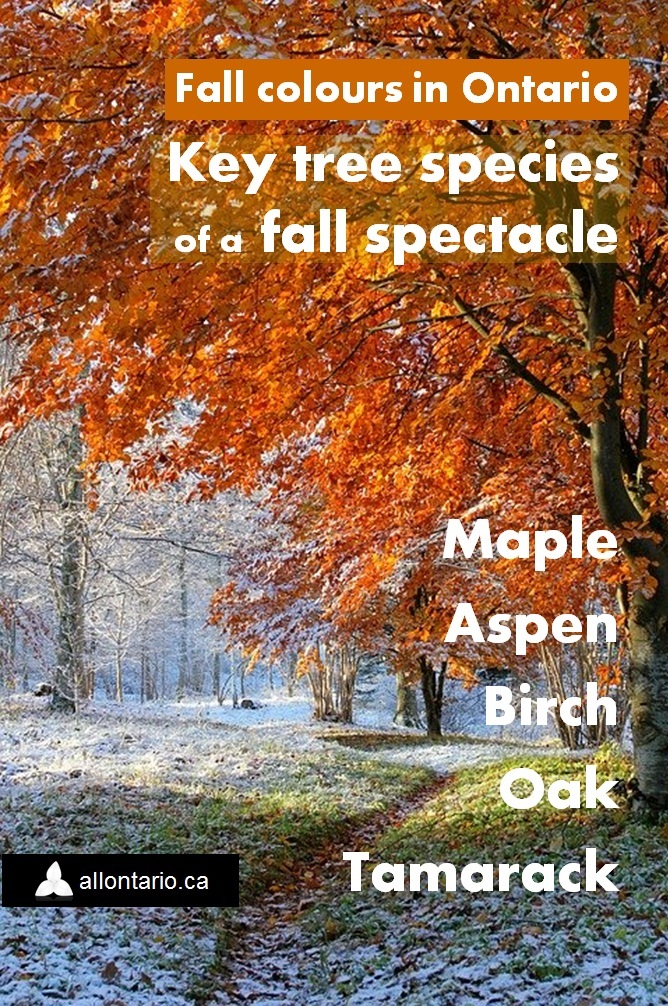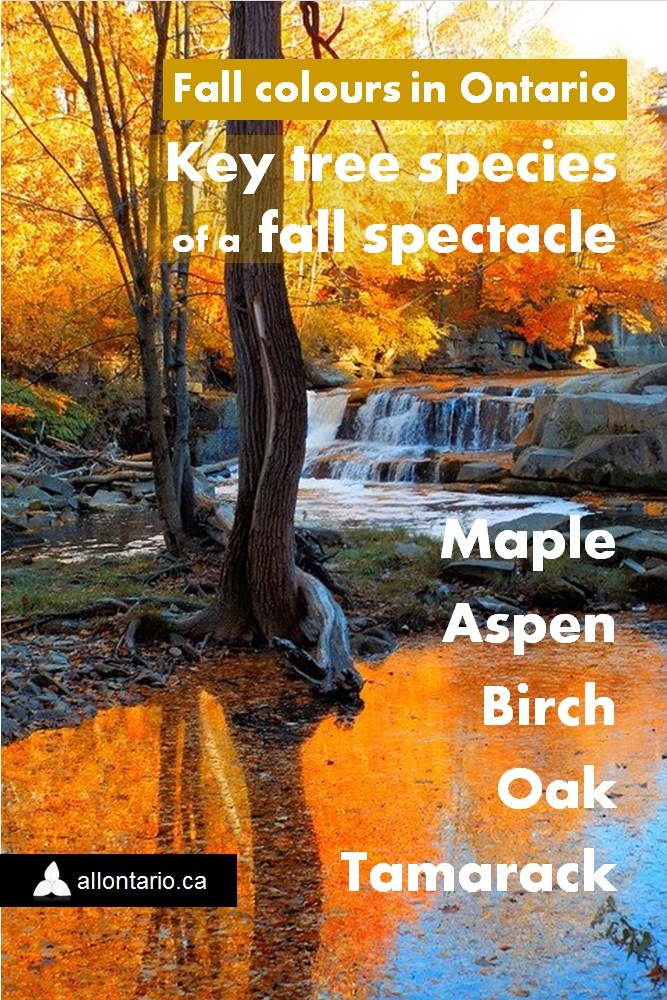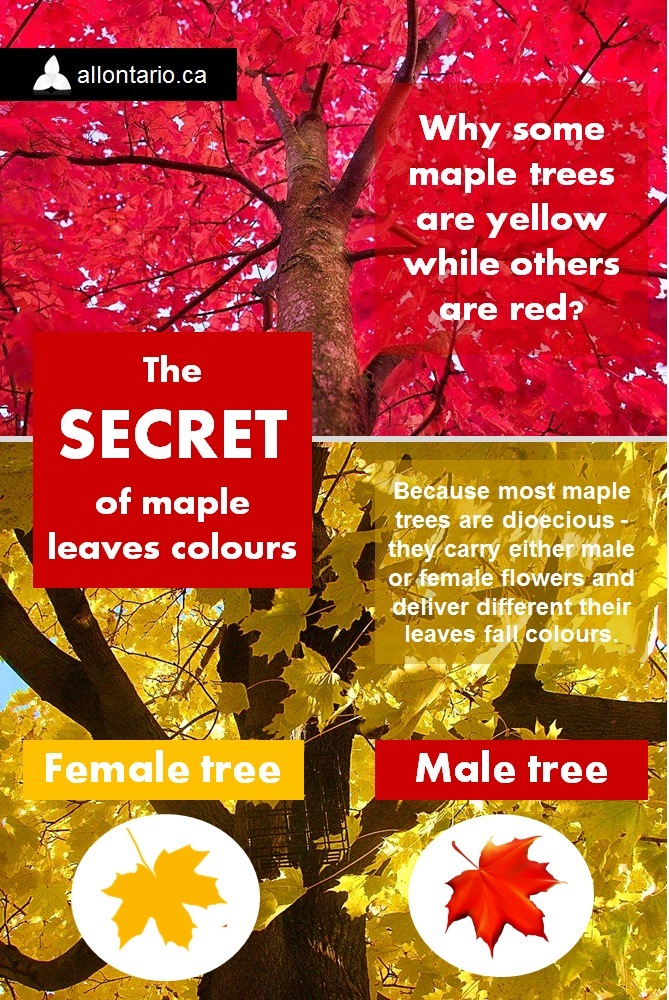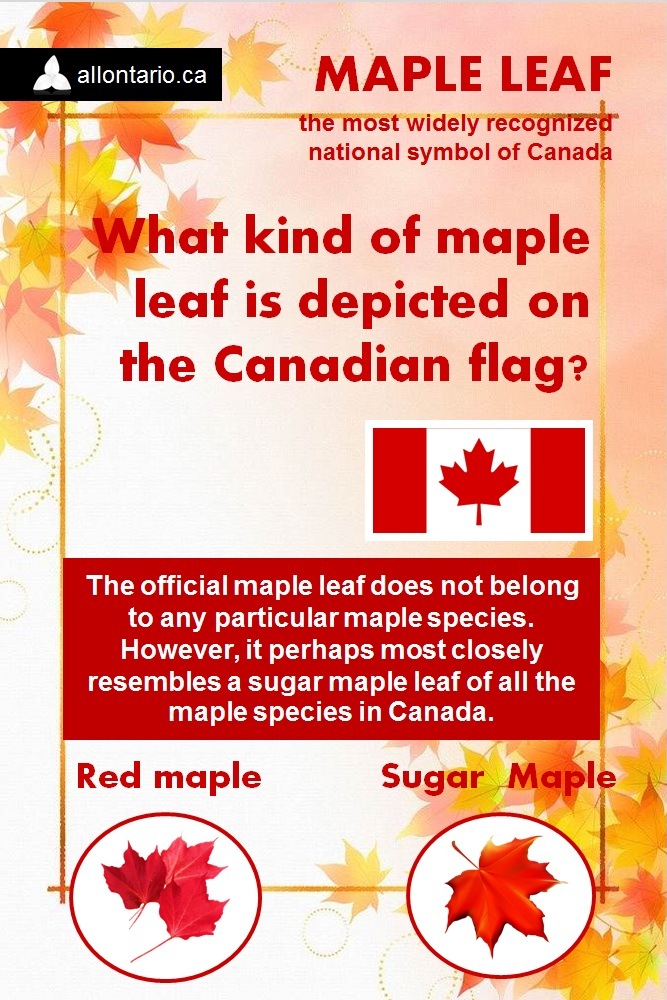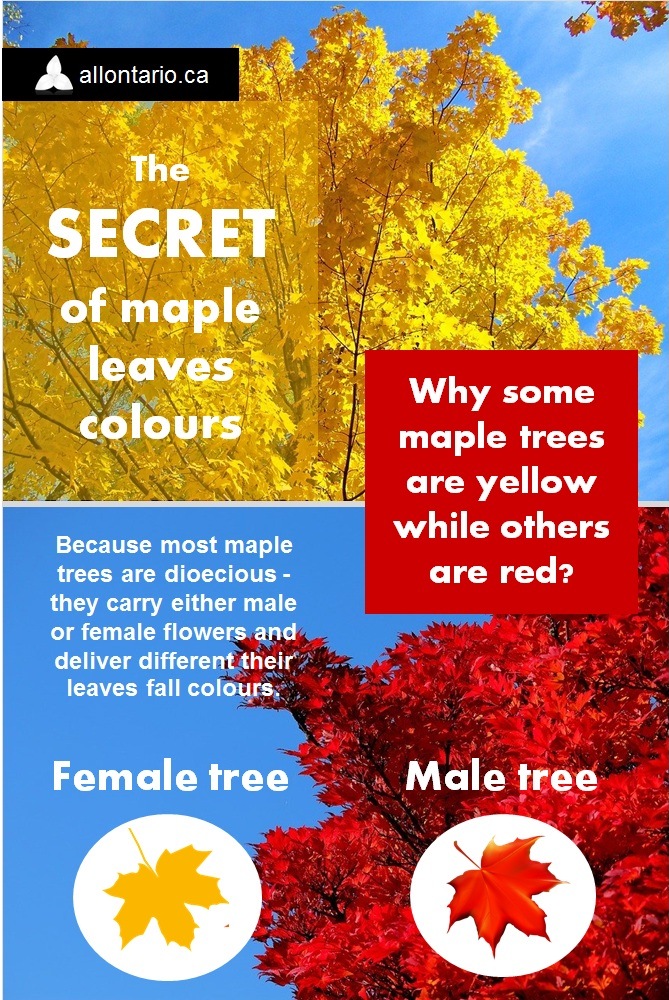Would you agree if we say that the fall time is the most beautiful time of the year?
 It’s the season when the temperature drops and the leaves change colour making the postcard-like views everywhere in Ontario. What are the key tree species involved in a fall spectacle?
It’s the season when the temperature drops and the leaves change colour making the postcard-like views everywhere in Ontario. What are the key tree species involved in a fall spectacle?
Key tree species involved in a fall spectacle
Maple
The key tree species involved in the magnificent autumn spectacle, are primarily the maples, namely Red Maple (Acer rubrum) and Sugar Maple (Acer saccharum).
Red maple is the most abundant native tree in eastern and central North America. It is best known for its brilliant deep scarlet foliage in autumn. Its leaves are quite variable in form.
Sugar maple is best known for being the primary source of maple syrup and for its brightly coloured fall foliage.
These two common species can sport a spectrum of colours from fluorescent red to fluorescent yellow. But how come that some maple trees are completely yellow, others are completely red or just a mix? What is the secret?
The secret of maple leaves colours
Most maple trees are dioecious – they carry either male or female flowers, but in some there are both, male and female, sometimes separated on different branches. And that is the secret of the tree fall colour:
- The male maples deliver the brightest reds, often with individual trees seemingly ablaze with brilliant red leaves.
- In contrast, the female maples display a bright yellow/orange hue unlike the males.
- That’s why some maples have a tendency for certain parts of a mature tree to change colour weeks ahead of or behind the remainder of the tree and to colour unevenly in fall.
Maples are long-lived plants, they live 300-400 years, and every fall they deliver the overwhelming beauty, the brightest colours of life.
Maple leaf – the most widely recognized national symbol of Canada.
The maple leaf is the most widely recognized national symbol of Canada. Being a centre of the national flag, it’s the top symbol of Canadian identity that set Canada and Canadians apart from other peoples and cultures of the world.
If you are a proud Canadian you can get a beautiful customizable pins with the red maple leaf, which will never get “dried”, never fade its color, and never be scratched.
Many people think a red sugar maple leaf is featured on the flag of Canada, but the official maple leaf does not belong to any particular maple species. However, it perhaps most closely resembles a sugar maple leaf of all the maple species in Canada. The leaf on the flag was specially designed to be as identifiable as possible on a flag waving in the wind without regard to whether it resembled a particular species’ foliage.
Aspen
The slender, white-barked trees paint the Ontario landscapes with their beautiful yellow, gold, orange, and reddish-brownish colours in the fall. Aspens glow in a patchwork quilt of these different hues, against a background of dark green conifers, gray and black rocks, wispy clouds, and deep blue skies.
After bearing deep-green leaves all summer, in autumn, American aspens (Populus tremuloides) deliver a bright golden-yellow fall foliage colour. Timing peak aspen colours each fall is an imperfect science, and the ideal time and place one year can turn out to be a disappointment the next.
The dazzling colours of the aspen grove include one or more aspen clones. The aspen trees of a particular clone will change colour at the same time because they are genetically related. Autumn is the time to see where the different clones are located.
Birch
Known by the Celts as Beith (pronounced ‘bay’), it is the symbol of new beginnings, regeneration, hope, new dawns and the promise of what is to come. The tree carries ancient wisdom and yet appears forever young.
The bark of all birches is characteristically marked with long, horizontal lenticels, and often separates into thin, papery plates, especially upon the paper birch. Distinctive colours give the common names gray, white, black, silver and yellow birch to different species.
The birch’s best feature is not only the golden fall colour, but rather its fascinating white peeling bark, which is there for you to enjoy winter, spring, summer, and fall.
In the fall, the chalky bark, or “paper,” together with golden leaves deliver a stunning, magnificent picture.
Red Oak
Northern red oak (Quercus rubra) is native to Ontario. Its leaves are handsome throughout the year, emerging pinkish-red, turning lustrous dark green in summer, and changing to russet-red to bright red and reddish-brown in autumn.
Red oak trees acquire their fall foliage colours later in autumn than do maple trees. As such, they have a tough act to follow. But those of us who dread the transition from fall to winter are ever so appreciative of the late autumn colour that the oaks furnish. It’s a boon to those who desire to see the season for autumn colour extended for as long as possible.
Tamarack
Tamarack is among the few conifers that lose their needle-like leaves in the fall. A member of the Pine Family, the tamarack (Larix laricina) is a slender-trunked, conical tree, with green deciduous needles. The needles of the tamarack are produced in clusters of ten to twenty. They are attached to the twigs in tight spirals around short spur branches.
Borne soft and blue-green in colour, the needles turn golden yellow in the fall very gracefully, taking on a beautiful autumn colouration beforehand.
Tamarack trees are an exquisite, underrated autumn pleasure.
“Yet what a glorious burst of colour those dying needles provide en route to their inevitable demise. Although crimson maples and oaks get all the oohs and aahs from us in fall, I’m always bowled over by the pure, pyramidal beauty of tamaracks.” (~Sonia Day)














